Does your dog receive a meal before you leave for the day but hold off on eating it until you come home? That indicates he is a little (or a lot) anxious about being left alone at home.
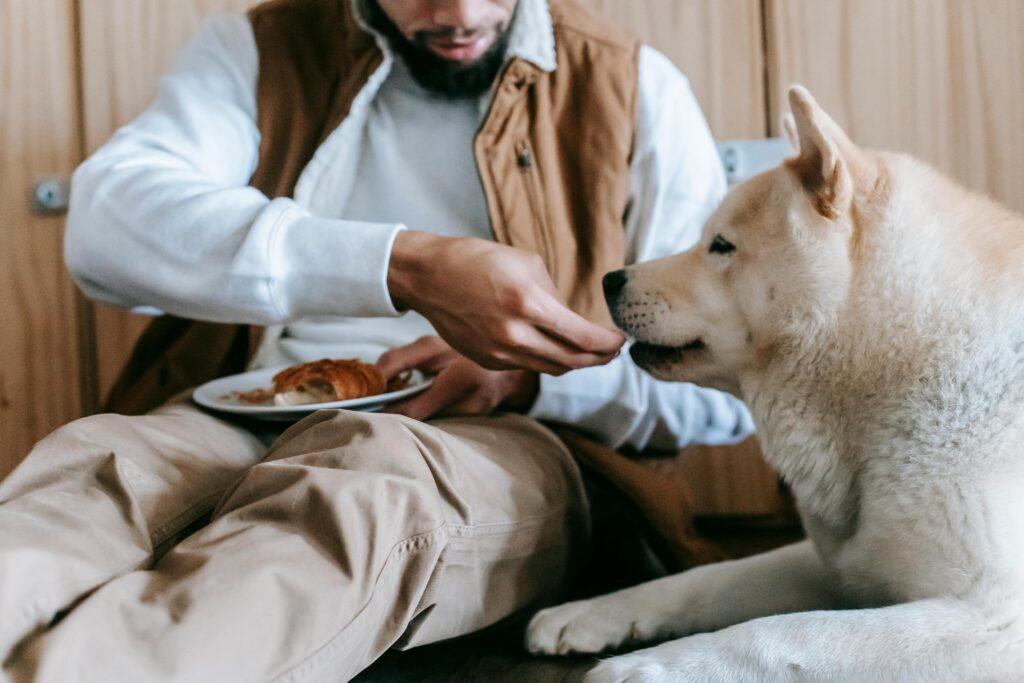
Unexpectedly many dogs refuse to eat meals while their owners aren’t home, but they scramble to finish their meals as soon as their loved ones get home. The most frequent cause of your dog’s lack of appetite while you are away is worry, and a worried dog is a cause for concern.
“But my dog doesn’t seem stressed,” you might object. If your dog only exhibits stressful behavior when left alone and her stress level is low enough that she isn’t acting out in other ways, it’s possible that you aren’t present when she exhibits her primary stress behavior, which is refusing to eat when you aren’t around.
Dog training experts frequently advise clients to leave their dogs with a slow-feeding dog toy, such as a stuffed Kong, to keep them occupied and relieve stress while their owners are away. You can’t use this useful enrichment tool if your dog won’t eat while you’re gone. And when your dog is too anxious to eat meals, it is never a good thing!
Check to see whether he/she will eat if there is another person around first. You’ll be able to discern from this if she is experiencing low-level separation stress (she must be with you) or isolation stress (he/she is fine around any person as long as she is not alone). If he/she exhibits any additional signs of anxiety, such as pacing, panting, or vocalizing, put up a cell phone, laptop camera, or security camera to record footage of her while you’re away.
His/Her anxiety is probably not too severe if there are no other indicators of stress, and you might be able to relieve his/her with an over-the-counter supplement like L-theanine (consult with your veterinarian first!).
If he/she is more distressed, you are dealing with a problem that is more serious than mild stress or anorexia. If that’s the case, I advise you to seek the help of an experienced force-free professional. These individuals would have the initials “CSAT” (for certified separation anxiety trainer, certified by separation anxiety specialist Malena DeMartini) or “SAPro” (for a “Separation Anxiety Pro” trainer, certified by Julie Naismith) and be qualified to work with separation anxiety.
Keep in mind that if your dog is stressed, help is necessary.
If you are interested in a Posh Dog Knee Brace contact us via our contact form or visit our Facebook Page.
A dog meal with a larger calorie level is the best for dogs to gain weight.
Adding more meals to your dog’s daily diet is the quickest strategy to aid in weight gain. If he typically consumes two meals per day, increase that to three or four while gradually increasing the amount of food consumed and maintaining a consistent mealtime schedule. You might also try:
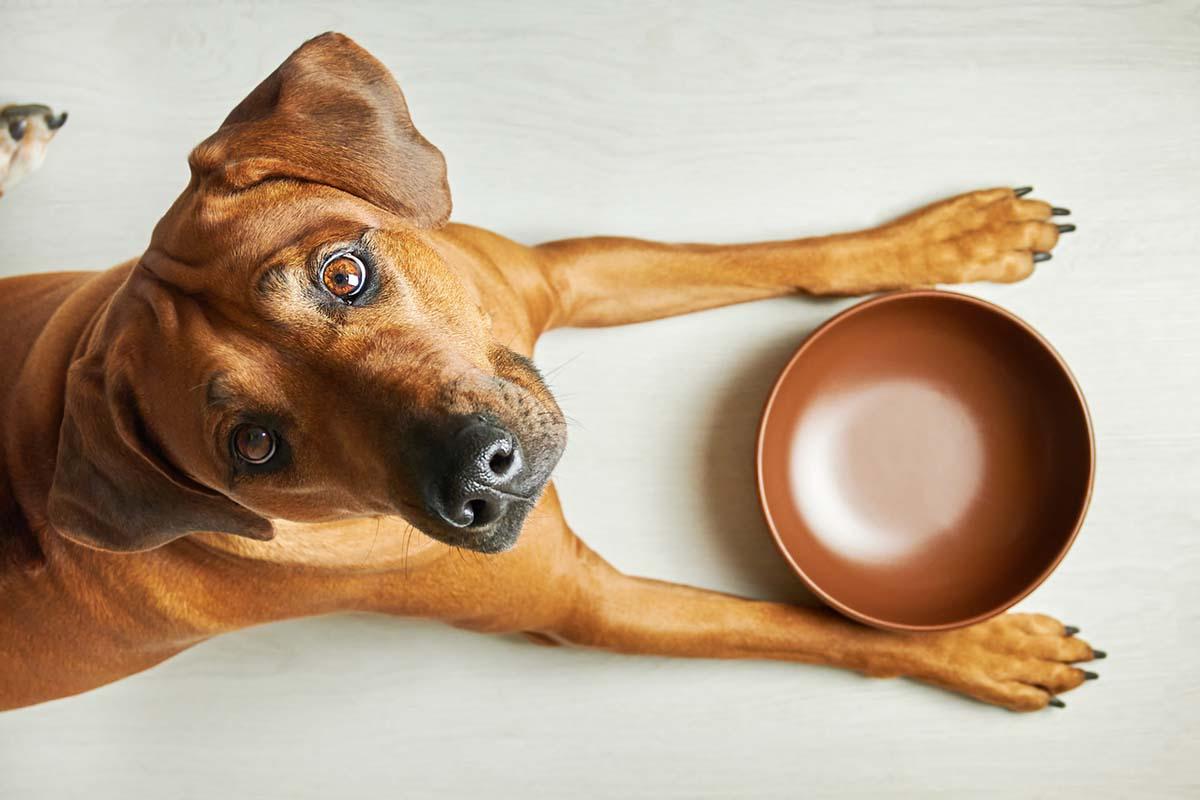
If feeding your dog an extra meal is difficult due to your work schedule, check for the best dog food designed for weight increase. These meals may be labeled as weight-gain dog food, but they definitely aren’t since they have more calories, which are frequently mentioned in tiny print beneath the ingredients list. It’s more likely that you’ll see them marked for active, sport, or performance dogs, which are dogs that require more calories since they expend more energy. These foods typically cost more money. Over the course of roughly a week, gradually transition to the new diet.
But be cautious. Make sure your dog is indeed lean because, like humans, most dogs have a tendency to weigh too much, and we might grow acclimated to that look. Your dog will have a waist that is directly in front of his hips, can be felt through a thin layer of fat, and will be at an appropriate weight. He appears to be snuggled up. He is too thin if the tops of his ribs or the hip/pelvic bones are visible.
Monthly dog weight checks are an excellent guide. Just pick up the dog and step on the scale in the restroom. The weight of the dog is then determined by weighing you alone and deducting that amount. Dogs that maintain a healthy weight live longer.
Some dogs actually need to put on weight, even if the majority of dog owners are waging the war of the bulge and trying to keep their canine companions trim. Boys in their teen years, some senior dogs, and dogs with cancer or other chronic illnesses are among the typical populations who need to gain weight.
So make sure your dog is healthy before starting a weight-gain program by taking him to the vet. Along with performing a physical examination, your veterinarian will likely screen your pet for intestinal parasites and heartworms. In most cases, a complete blood panel is not prohibitively expensive and can be beneficial to rule out a variety of illness issues.
If your dog is a finicky eater, you might want to supplement some of his meals with home-cooked food. Although there are ideas online for cooking homemade meals and treats that can make you gain weight, they might not be very nutrient-dense. To assist you in creating a balanced diet depending on what you wish to feed, look for businesses that employ veterinary nutritionists. Although there is a fee, it is well worth doing this properly.
Other strategies for getting your slim dog to gain weight and eat here are as follows:
Undoubtedly, a dog that is too underweight should be avoided, but take extra care if he also appears lethargic or “not himself.” The ideal place to begin your weight-gain attempts is at your veterinarian.
If you are interested in purchasing a Posh Dog Knee Brace contact us via our contact page or visit our Facebook for more information. We’ve Helped Dogs All Around The World, Now We Want To Help Yours…
Making your own top-quality dog treats at home is a great way to ensure that your furry friend is getting safe and wholesome treats tailored to their dietary needs and preferences. Here’s a simple recipe to get you started:
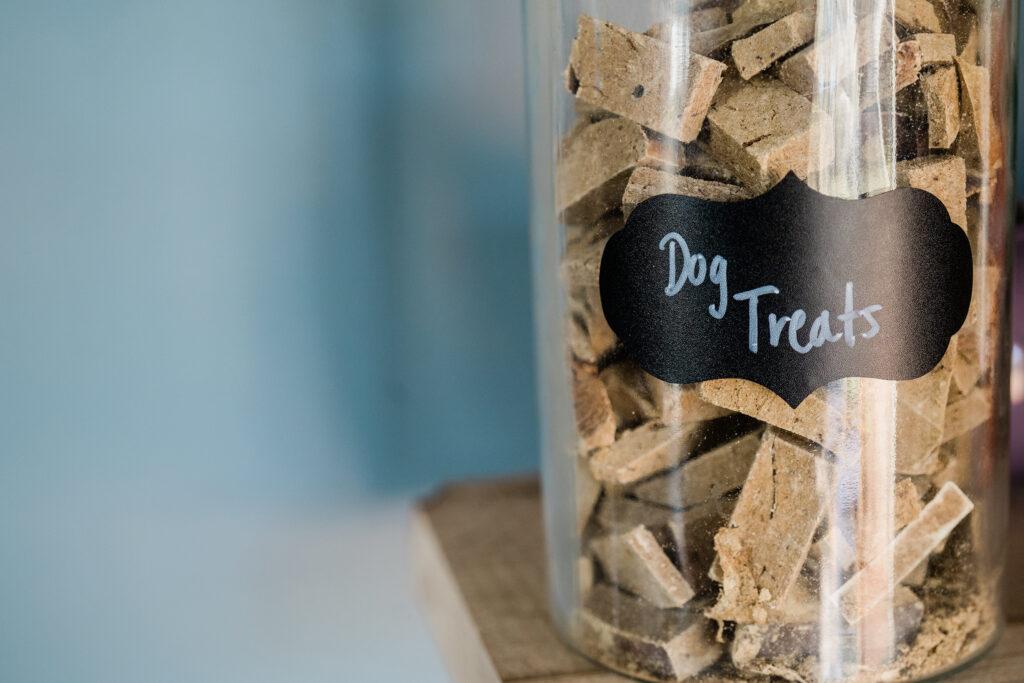
Remember to adjust the recipe according to your dog’s dietary needs and any potential food allergies they may have. Before introducing any new dog treats into your dog’s diet, it’s a good idea to consult with your veterinarian, especially if your dog has specific dietary restrictions or health conditions. Homemade treats can be a delightful and nutritious addition to your dog’s diet, and they’ll surely appreciate the love and effort you put into making them!
If you are interested in one of our dog braces please contact us via our contact form or visit our Facebook Page.
When preparing homemade dog food, it’s essential to include a balanced combination of ingredients that provide the necessary nutrients for your dog’s health and well-being. Here are three essential foods for dogs that you can incorporate into homemade dog food recipes:
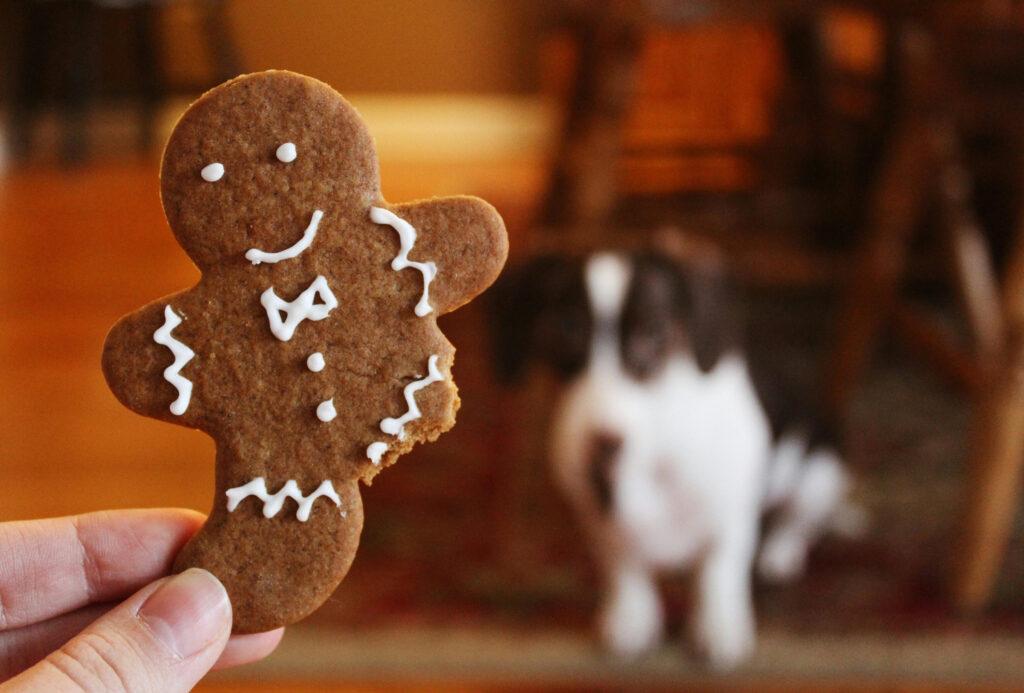
raisins, chocolate, and certain artificial sweeteners like xylitol. Always consult with your veterinarian to ensure that the homemade dog food recipe meets your dog’s specific nutritional requirements, taking into account their age, size, breed, and any health conditions they may have.
Keep in mind that homemade dog food should be properly balanced and varied to provide a complete and nutritionally adequate diet. A qualified veterinary nutritionist can help you create a balanced homemade diet plan tailored to your dog’s individual needs and preferences.
If you are interested in one of our products you can check out our Shopping Page, if you would like to join our Facebook page click here.
Hey guys, this is Nikki Lead Veterinary technician with posh. Today let’s talk about treats. I have so many clients that are taking charge of what their dog is eating, and I want to elaborate a bit on that. In my other blog, we discussed the importance of finding a food that is without corn, wheat, and soy, and finding a good protein as the first ingredient. Some will even go as far as raw feeding, and that is great for those that have the time!
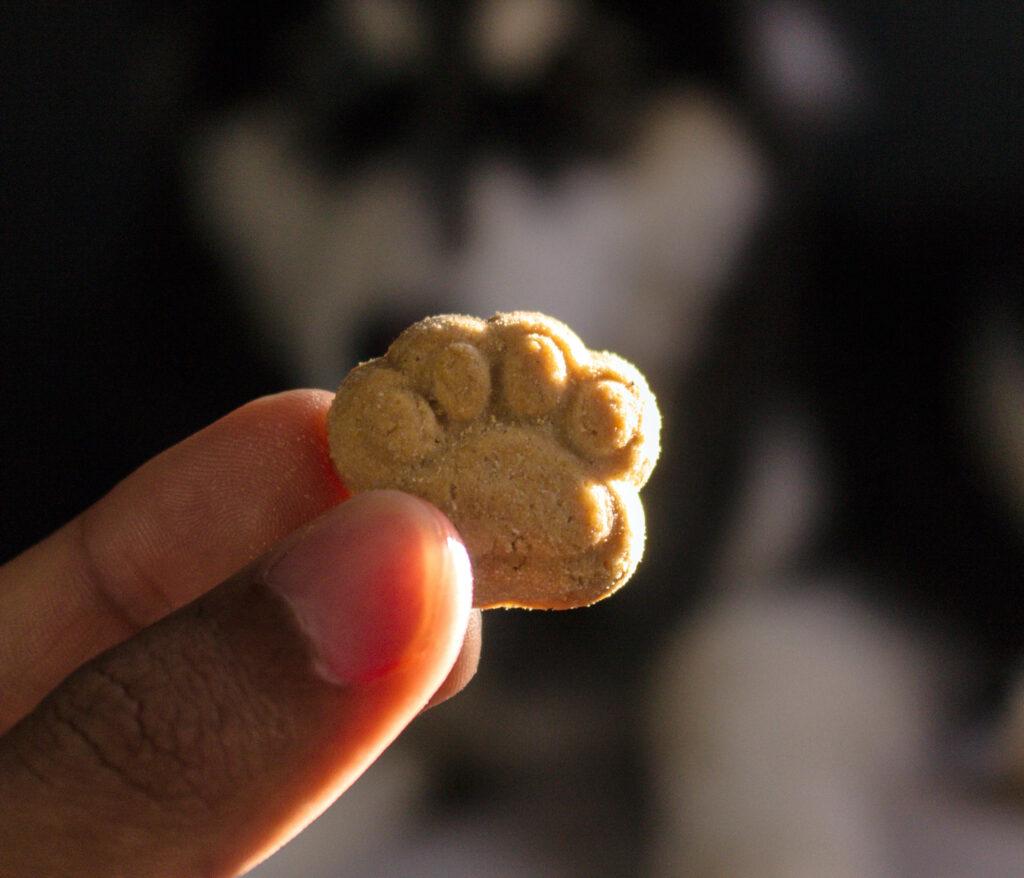
So, you have done all this research, found a dog food that fits your dog’s healthy lifestyle, but they are still showing signs of skin issues, obesity, and inflammation? This means it is time to find out exactly what goes into your dog’s mouth each day, you will actually be surprised how many treats and things your dog actually gets per day.
First off, start by placing a treat inside a bag for every treat you give your dog. If you give them a milk bone for example, you put one into the bag as well. At the end of the day, take note of what you gave your dog, plus what treats you used.
You will be amazed how many people don’t think about treats, and are spending literally hundreds of dollars every month on good quality dog food. Yet, after just one milk bone, you have basically undone all of the good you were doing. Did you know the main ingredient in common dog treats is wheat? That is the first ingredient. The second is some kind of by product, then corn, and so on.
Do you see the problem? Dog’s can’t digest wheat and corn well, and they can cause all sorts of issues with their digestive system. So, please stop giving milk bones to your dog if they have any injuries, itchy skin, or you are trying to get them to loose weight.
Now I am not telling you to stop giving treats, not at all! My sweet girl gets her treats daily, but we give her healthy treats, and are more aware of what she gets. Probiotic treats are great! My all time favorite is freeze dried treats. They are a bit more costly than milk bones, but only have one ingredient! Beef liver, or chicken, lamb, even bison if your dog is food protein sensitive.
So, please look into freeze dried treats, sweet potato, cooked vegetables, or some cooked chicken instead of grabbing those milk bones! Please let me know if you have any other questions! You can reach me at poshintake1@gmail.com , or www.poshdogkneebrace.com. Or you can you visit our Facebook Page for more information.
Protecting your dog from potentially toxic chewy treats is essential for their health and well-being. Here are five ways to ensure your dog’s safety:
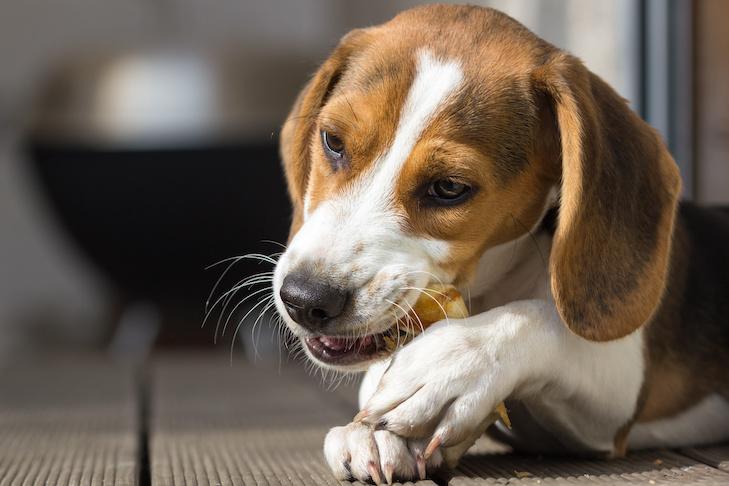
Additionally, consider making homemade dog treats using simple and safe ingredients. Many online resources offer easy and healthy recipes for homemade treats that you can tailor to your dog’s preferences and dietary needs.
Remember, your dog’s safety and well-being should always be a top priority. By being mindful of the treats you give your furry friend and staying informed about potential risks, you can help protect them from potentially toxic chewy substances and keep them happy and healthy. If you have any concerns about your dog’s health or diet and want to know about toxic chewy treats, don’t hesitate to consult your veterinarian for professional advice.
For more information about our Posh Dog Knee Brace contact via our contact form or visit our Facebook Page.
There are many advantages to hand-feed your dog or puppy, and there are only a few circumstances in which it’s not a good idea.
Many dog trainers hand-feed their dogs their meals throughout the day rather than feeding them from a bowl for the most of the day. Every encounter with a dog is a chance to train them. Along with catching your dog in the act of being good, setting aside a portion (or all!) of your dog’s morning and evening meals and hand delivering that food as needed throughout the day will help you increase your rate of reinforcement and create value for the behaviors you want to see more of. A puppy can continuously practice basic behaviors like sit, down, wait, come, and other polite expressions by being hand-fed.
Additionally, hand-feeding for a while can assist raise the dog’s attention on you as the handler by linking you with meals and feeding, which can help dogs who are usually confident but who have many interests, of which you are just one, or dogs who are easily distracted, pay more attention to you.
Hand-feeding can enable you and a new dog or dog and a new person in your life get to know one another.
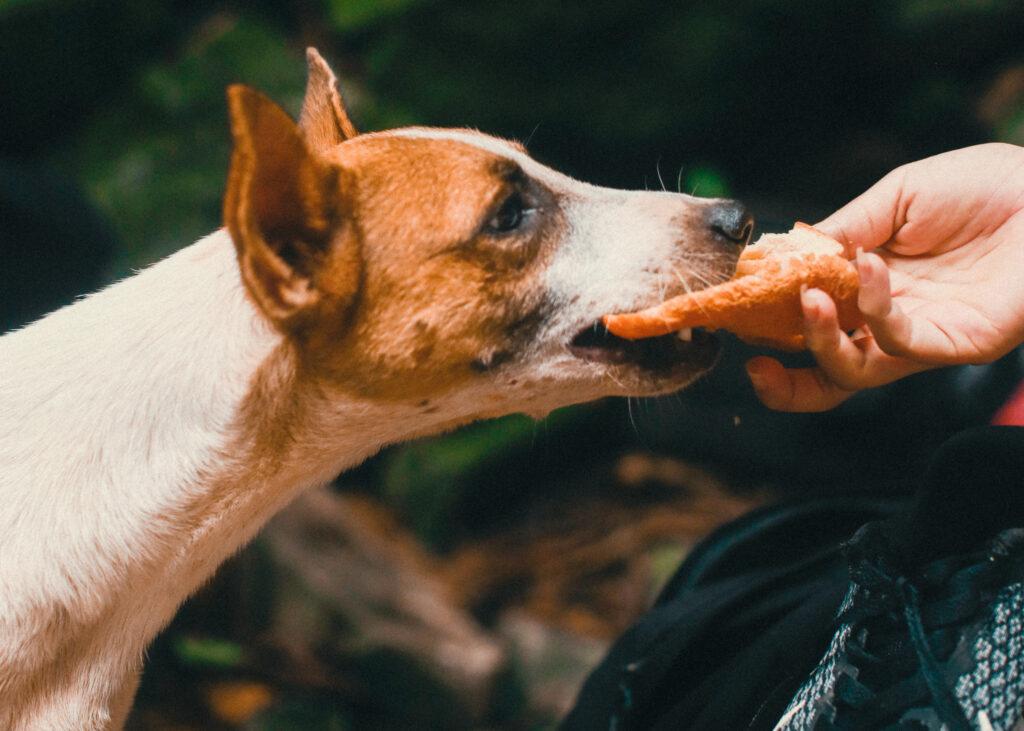
While hand-feeding a dog can help build a relationship with them, it can also increase stress if the dog is extremely timid or scared. Similar to people, some individuals would try to bribe a timid dog with food or treats to make him more comfortable among strangers. However, what frequently occurs (especially with dogs who really enjoy food) is that the allure of the food temporarily overrides their unease about the person – but only for as long as it takes to grab the food. The intention is for the dog to associate the presence of the “scary person” (“Yikes!”) with the presence of the food (“Yum!”).
They immediately realize the “scary person” is too close for comfort once the meal is in their mouth. In this instance, the food serves less as a tool to assist in changing the dog’s relationship and more as a trap.
When dealing with the “strangers are scary” issue, it is preferable for the owner to provide meals while the “scary person” is visible but sufficiently enough away to not raise any serious concerns. If you’re trying to bond with a dog who is really timid, adopt a similar strategy by staying close enough to him so that he identifies your presence with the food, but not so close that it requires a lot of bravery (or desperation) to eat it.
Hand-feeding certain dogs may make them more reckless with food. In an effort to acquire the food, many dogs become too excited and may jump up or lunge at their owners’ hands. Asking your dog to sit while you hold a piece of cheap food in your open palm will assist you teach impulse control in this situation. Try to bring your palm up near your dog. If he approaches the meal, clench your fist and, if necessary, ask him to sit down once more. Use your opposite hand to carry food to your dog’s mouth and command him to “take it!” as soon as he can control himself as your food hand approaches.
For some dogs, “self-control” will look differently. In the beginning, self-control may require a dog who is very excited to maintain a sit position for two seconds with your open hand 12 inches above her head. If your dog has a tendency to leap up on you when you are holding food, tether her with a leash to a solid object and stand just beyond the end of the leash. Your dog will eventually figure out that being patient in the vicinity of the food is the fastest way to receive it.
Try these suggestions if your dog bites down on food from your hand too forcefully.
A dog may become averse to eating from a dish in specific situations if it is fed by hand frequently. A little “tough love” could be necessary in such circumstances. Give your dog five minutes to finish his meal after placing it in a bowl. Attempt again later if he doesn’t, then take up the bowl. When food is present, a healthy dog won’t starve himself, even if using this method necessitates skipping a few meals while he waits to see if you’ll resume hand feeding.
If you are interested in a Posh Dog Knee Brace or have any questions about our braces you can contact via our contact page or visit our Facebook Page for more information.
The health of the dog depends on the owner’s ability to slow the dog’s eating.
Most dogs enjoy eating. Some dogs seem to devour their meal faster than we can blink since they adore it so much! Dogs who consume food too quickly may get sick, especially if they also take in a lot of air and develop the potentially lethal illness known as bloat. Anyone who has had their dog go through this disease understands how crucial it is to train them to eat more slowly.
Some dogs consume food so quickly that their systems can’t keep up with it; the food never even reaches the point of digestion. The end consequence is food regurgitation, which happens when food is ingested and then immediately comes back out of the mouth as a result of the esophagus’ muscles contracting backward. Food was never even consumed by the stomach. In these situations, it is advised to reduce the dog’s food intake.
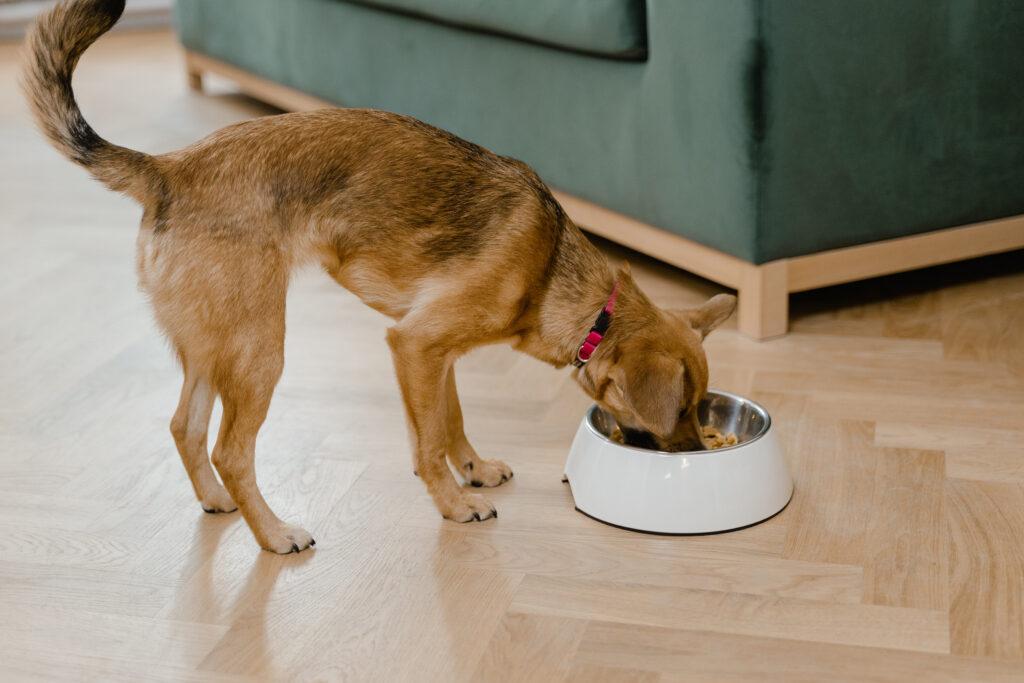
Consult your dog’s veterinarian if you’ve tried these remedies and your dog is still vomiting or regurgitating food to rule out a more serious problem.
You can always reach us on our contact page or check out our Facebook Page for information on our brace and more.
Dog kibble has an average shelf life of 12 to 18 months, but once it’s been opened, you must employ proper storage to prevent the dog food from spoiling.
Although dry dog food, also referred to as “kibble,” is recognized for having a lengthy shelf life, how long does it actually last? If a bag is opened, it should be consumed within four to six weeks, provided it is stored properly.
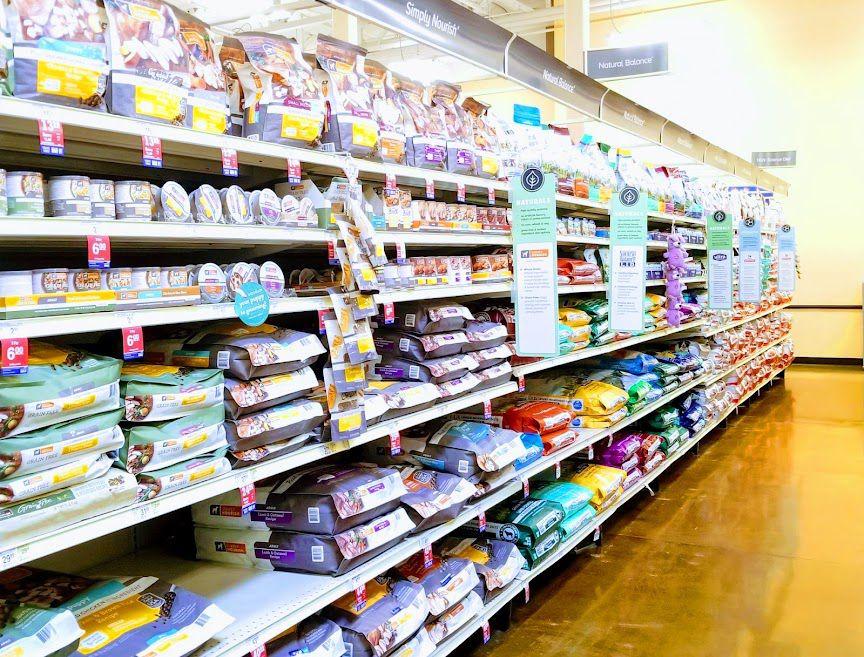
Unopened kibble bags typically have a shelf life of 12 to 18 months. Based on the date the product was made, the “best by” or “use by” date printed on the original box was chosen. Although dry dog food doesn’t legally expire, the “use by” or “best by” date could be seen as an expiration date.
Some nutrients, such as vitamins, begin to naturally deteriorate over time. Nutritionists are fortunately well aware of this. Nutritionists make sure that essential nutrients are added in amounts high enough to offset these natural losses while creating a food. By doing this, even as the food nears the end of its shelf life, it will continue to be balanced and complete for your dog. The kibble should, however, be consumed within four to six weeks of being opened.
The manner you keep your dog’s kibble can affect how quickly their dry food spoils. Conditions that speed up deterioration include:
After opening a bag of kibble, keep it tightly wrapped in the original bag it came in or within an airtight container to ensure maximum freshness. Food’s fats oxidize more quickly when exposed to air and oxygen, which causes the food to become rancid. Kibble must always be kept in a cold, dark place because exposure to light and heat speeds up this process.
Of course, the dry food for your dog needs to be kept dry. Food that has been exposed to moisture or is very humid may develop mold, which your dog may eat and consume hazardous poisons. While freezing your dog’s dry food will help prevent fat rancidification, it is not advised because it might cause condensation and moisture buildup inside the bag when defrosted.
Although dry dog food has a fairly lengthy shelf life, it is your responsibility to guarantee its freshness after it has been opened. When selecting a bag size, use correct storage techniques and take your dog’s food consumption into account. Choose a size that will be completed four to six weeks after it is opened. These procedures will make it easier to guarantee that your dog constantly gets fresh food each day.
If you would like more information about our services or products you can contact us through our contact page, also don’t forget to check out our Facebook Page for more information.
Let Your Dog Recover With Our Custom Dog Knee Brace!
We’ve Helped Dogs All Around The World, Now We Want To Help Yours…
Improved cognitive performance, joint flexibility, and immune function, including the prevention of mild skin allergies, are just a few advantages of salmon oil for dogs.
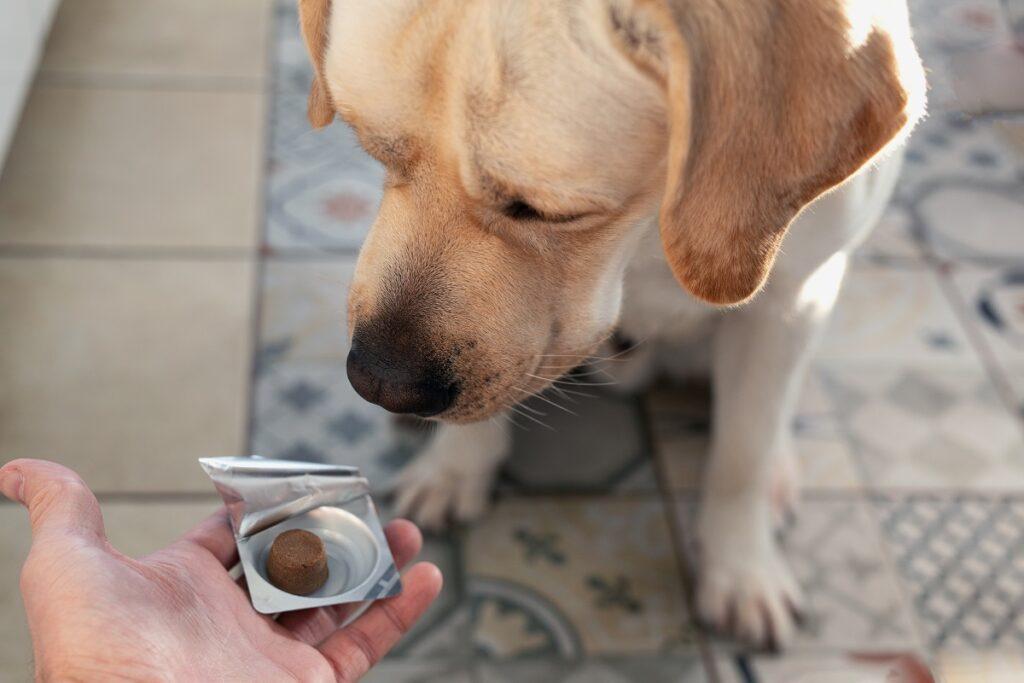
In addition, fish oil can help dogs with heart and kidney problems, and DHA is believed to help with eye and brain development in puppies.
The omega-3 fatty acids eicosapentaenoic acid (EPA) and docosahexaenoic acid (DHA) should both be present in the salmon oil supplement you choose for your dog.
Wild, cold-water fish that have just been captured is the best source of fish oil supplements. You want a product that has been screened for impurities like heavy metals and is produced by a company that employs sustainable fishing methods.
Choose brands bearing the National Animal Supplement Council (NASC) mark to verify that high-quality ingredients are utilized and that the contents correspond to the claims on the label because pet supplements are not FDA-regulated.
Work your way up to a dose of salmon oil that is approximately 25% of the recommended amount listed on the product label. Maximum doses are not always tolerated by all canines.
Some adverse effects of are:
Salmon oil should probably be avoided by dogs who have clotting issues. Always consult your veterinarian to determine whether salmon oil is appropriate for your dog, given his health history, current diet (which may already include omega-3 fatty acids), and medications. Medication interactions with other medications, such as NSAIDs, are possible.
All fish oil products should be safely stored away from direct sunlight in a cool environment.
If you are interested in any of our products or have questions you can visit our contact form for more information or you can check out our Facebook Page.
Dog feeding recommendations, including how much to feed a puppy, are merely a general suggestion. Here’s how to properly feed your dog.
The amount of food to feed your dog will vary depending on the dog’s size, age, breed, degree of activity, and genetics. How much food to give your dog can also depend on whether it has been neutered or spayed.
There are no formal food recommendations for dogs because of this. Calories determine how much food to give your dog, just as they do for humans, and each dog has a different caloric requirement.

According to the American College of Veterinary Nutritionists, there are between 300 and over 700 calories per cup in various brands of kibble. That represents a huge gap. Thankfully, the majority of pet food producers now provide the number of calories in a cup of their food.
The “resting energy requirement (RER)” is a general term for the amount of calories your dog needs to consume to maintain their ideal weight. Divide the dog’s optimum weight in pounds by 2.2 to get kilos to get your dog’s RER. Then add 70 and multiply that result by 30.
So let’s suppose your dog should weigh 90 pounds at its ideal size. 90 lb divided by 2.2 equals 40.9 kilograms. Add 70 and multiply by 30 to get 40.9 x 30 = 1,227 + 70 = 1,297. Therefore, a 90-pound dog needs 1,297 calories per day (without additional exercise) only to carry out basic bodily activities.
Examine the meal you are feeding next. Let’s suppose each cup has 380 calories. Therefore, divide 1,297 calories by 380, or the number of calories in one cup of food, to get the following result: An average 90-lb dog needs 3.41 cups of food per day divided by 1,297 380. However, not all dogs are average, and all dogs need get at least some exercise.
To maintain a healthy weight, the RER must be multiplied by the dog’s energy requirements and then adjusted upward or downward. Since individual dogs can differ significantly from estimated numbers, you need still make adjustments to the number you receive in order to get your dog to a healthy weight and then keep it there.
Obese dogs should be fed at the RER for their optimal weight in order to shed weight. Working dogs who are active can require two to five times the RER to maintain weight. The RER x 1.6 is required for typical active neutered dogs. With typical labor, intact adult dogs require RER x 1.8.
At the very least, check your dog’s body once a month with your touch if you can’t weigh him on a scale. He should always have ribs that you can feel and a waist that you can see when you glance down over his topline. Your dog is too overweight if his ribs aren’t discernible. In these conditions, a lower-calorie dog food might be helpful to some extent, but ultimately, he will need to have smaller servings each day.
Do away with snacks and treats. For the majority of dogs, reducing your dog’s meal quantities by 25% is a straightforward, secure, and efficient method of weight loss. Take part of the kibble he would normally receive at mealtime and use that for treats if you’re teaching your dog.
Measure: To measure your dog’s food, use a regular measuring cup. Do not load food into the top centromedicorelaxesalute.it of the cup; instead, use level measures!
Nutrients: Choose a food that is formulated to fulfill the American Association of Feed Control Officials (AAFCO) recommendations for nutrients. The majority of mature dogs thrive on “maintenance” foods. Moms, puppies, and energetic dogs require extra calories, protein, and fat. These canines require food designed for “all life stages.”
Schedules: All dogs should be fed at least twice daily, and pups should be fed at least three times daily. Never give your dog a free-choice diet. Even those dogs who don’t gulp it up right away shouldn’t be free-fed because the majority of dogs will at least try to eat it all in one sitting. If you let your dog “graze” all day, it will take you much longer to realize that he no longer has an appetite.
Table scraps: Unless there is a need (such as a fussy eater, a senior dog, or a dog who is on boiled ground beef or chicken with rice owing to an upset digestive tract) or unless you reduce his regular food quantity correspondingly, don’t ruin all your hard work by offering your dog table scraps. If additional “leftovers” account for more than 25% of his daily caloric intake, you run the risk of throwing off the balance of a “complete and balanced” diet.
For more information about any of our products please contact us via our contact form or visit or Facebook Page.
Hey guys, this is Nikki Lead Veterinary technician with posh. Today let’s talk about dog treats. I have so many clients that are taking charge of what their dog is eating, and I want to elaborate a bit on that. In my other blog, we discussed the importance of finding a food that is without corn, wheat, and soy, and finding a good protein as the first ingredient. Some will even go as far as raw feeding, and that is great for those that have the time!
So, you have done all this research, found a dog food that fits your dog’s healthy lifestyle, but they are still showing signs of skin issues, obesity, and inflammation? This means it is time to find out exactly what goes into your dog’s mouth each day, you will actually be surprised how many treats and things your dog actually gets per day.
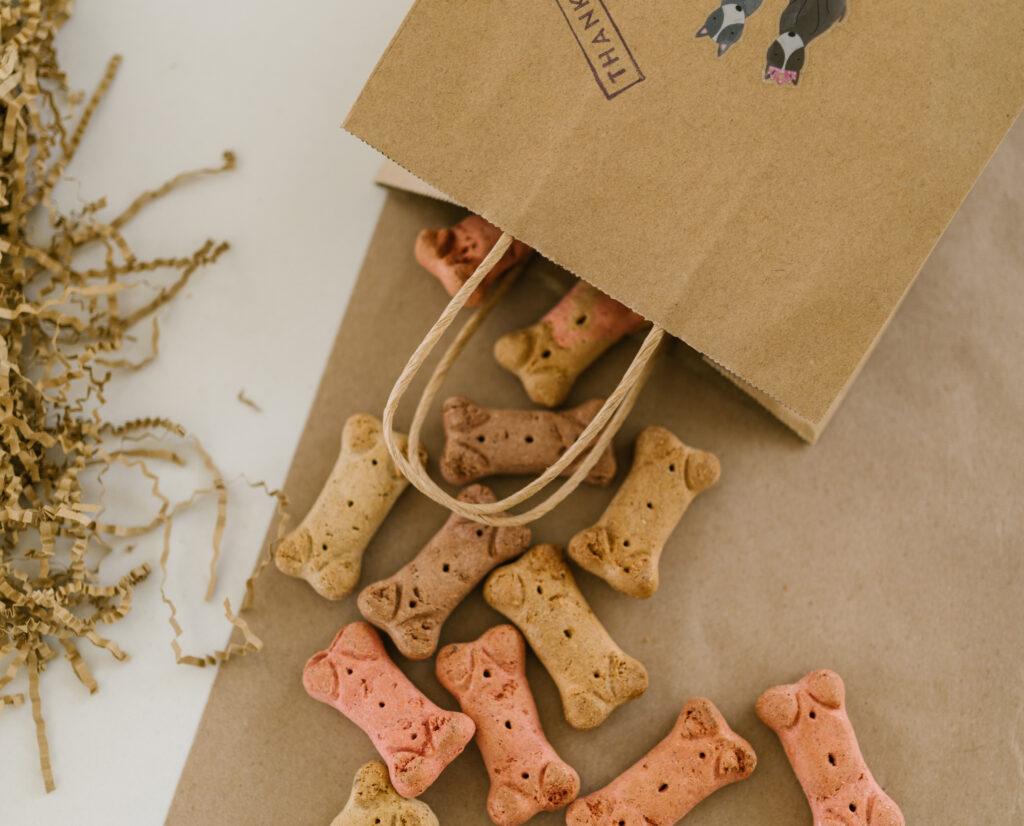
First off, start by placing a treat inside a bag for every treat you give your dog. If you give them a milk bone for example, you put one into the bag as well. At the end of the day, take note of what you gave your dog, plus what treats you used.
You will be amazed how many people don’t think about dog treats, and are spending literally hundreds of dollars every month on good quality dog food. Yet, after just one milk bone, you have basically undone all of the good you were doing. Did you know the main ingredient in common dog treats is wheat? That is the first ingredient. The second is some kind of by product, then corn, and so on.
Do you see the problem? Dog’s can’t digest wheat and corn well, and they can cause all sorts of issues with their digestive system. So, please stop giving milk bones to your dog if they have any injuries, itchy skin, or you are trying to get them to loose weight.
Now I am not telling you to stop giving dog treats, not at all! My sweet girl gets her treats daily, but we give her healthy treats, and are more aware of what she gets. Probiotic treats are great! My all time favorite is freeze dried treats. They are a bit more costly than milk bones, but only have one ingredient! Beef liver, or chicken, lamb, even bison if your dog is food protein sensitive.
So, please look into freeze dried treats, sweet potato, cooked vegetables, or some cooked chicken instead of grabbing those milk bones! Please let me know if you have any other questions! You can reach me at poshintake1@gmail.com , poshdogkneebrace.com or visit our Facebook Page.
It’s time to focus once more on the chocolate in your home with Valentine’s Day quickly approaching. After all, it’s customary to receive chocolate during this time of year that you would not often have on hand, and this can easily turn into an alluring treat for your family’s pets.
It’s crucial to keep in mind, though, how poisonous chocolate may be for dogs. Although chocolate toxicity in dogs or cats may not always result in death, it can be extremely harmful and may also result in long-term health issues.
To learn more about what to watch out for this Valentine’s Day and whenever you have chocolate in your house, read the information below.
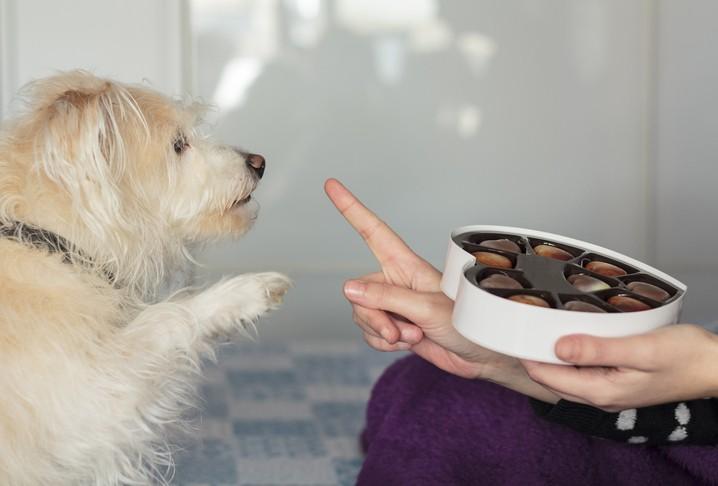
Chocolate is toxic to dogs for two reasons:
The first of these is that chocolate contains caffeine. While certain varieties of chocolate have more caffeine than others, all varieties of chocolate do. Caffeine can make your dog’s heart beat too quickly, which could have major negative health effects. The same logic applies to the argument against allowing dogs to consume coffee.
Theobromine is another component of chocolate that can be poisonous to dogs. This substance can act as a diuretic and behaves similarly to caffeine. Your dog may quickly get dehydrated as a result of this, which could cause other issues.
It’s crucial to keep in mind that a chocolate’s toxicity increases with how bitter it tastes. This indicates that white chocolate is less likely to be harmful than dark baking chocolate, which is particularly poisonous. Do not give your dog any chocolate, even if you believe it is not too bitter, as all varieties of chocolate can be toxic and hazardous to dogs and other pets.
Now that you are aware of the reasons why chocolate is harmful to dogs, it is critical to know how to spot the signs of chocolate poisoning in your pet.
Intoxication symptoms in dogs from chocolate include:
The two issues listed above are the first indications that dogs are poisonous to chocolate. In minor situations, dogs may merely vomit or have a few episodes of diarrhea before feeling better.
However, in extreme circumstances, these symptoms may worsen and eventually lead to the other conditions on the list below.
Dogs who have consumed too much theobromine or caffeine may exhibit increased thirst and urine. This is because theobromine and caffeine are both diuretics.
Particularly caffeine may make dogs act agitatedly. Even without the dog consuming much of it, darker chocolates with higher caffeine concentrations may cause this symptom.
A worrisome sign that might cause cardiac arrest is an increased heart rate, especially in older or sicker dogs. It may be advised to take your pet to the emergency vet for monitoring and/or treatment since it can be challenging to monitor your pet’s heart rate at home.
One of the worst signs of dog’s excessive chocolate poisoning is seizures. This may only happen if a dog consumes a significant amount of chocolate, but it occasionally indicates that the toxicity will become fatal without veterinary care.
If your dog exhibits this symptom after consuming chocolate, take him to the clinic right away.
Depending on the signs your dog exhibits after consuming chocolate, you may need to take different actions.
If you are aware that your pet has had chocolate, call the emergency veterinarian as soon as possible. Depending on the type of chocolate consumed and the size of your pet, clinical symptoms and issues can differ greatly. Your pet may occasionally be made to vomit the chocolate up by the vet in an effort to prevent or decrease the possibility of developing clinical symptoms.
Do not wait for symptoms to appear before contacting your veterinarian; once symptoms appear, treatment becomes much more challenging.
Please take your pet to the emergency vet if he exhibits any of the signs on this list and you are certain that he has consumed chocolate. Dehydration can occur quickly as a result of excessive thirst and urine, which can be very dangerous for dogs.
The more quickly you react to your dog’s alarming symptoms, the more probable it is that your dog will be able to fully recover from the situation.
There are numerous ways to protect your dog at home and avoid chocolate toxicity:
If you keep chocolate of any kind in your home, you should always be aware of how you’re storing it and how probable it is that you’re pet will try to get to it. Whether you have brownies, cookies, milk chocolate bars, or cocoa powder in your kitchen or pantry, they should always be kept in a secure location that your pet can’t access.
Avoid leaving chocolate goodies or wrappers lying around by keeping cabinets and pantry doors closed whenever you can.
Additionally, it’s crucial to teach your pet the “leave it” command to stop them from grabbing objects—either food or inedible—that they shouldn’t. Early training of your dog in good manners and obedience can prevent a lot of hassle later on for both you and them.
Children are renowned for giving pets gifts. Get kids in the habit of putting things away in their right places and teach them not to offer your dog any chocolate or other goodies.
Make sure kids develop the habit of immediately closing the fridge, cupboards, and drawers after usage.
Cocoa shell mulch is a rare but potentially harmful source of chocolate poisoning in dogs. The mulch, which is frequently used as a top covering for plants, can entice dogs with its sweet perfume, causing them to consume some of the mulch, which can lead to disease.
Cocoa shell mulch should never be used for landscaping.
With the use of this knowledge, you ought to be able to protect your dogs at Valentine’s Day and any other time of the year when there is chocolate present. Keep any domestic pets under close observation and store chocolate securely out of their reach. You can avoid this potentially deadly issue altogether if you take this action. Call an emergency veterinarian straight once if you know or suspect that your dog has consumed chocolate.
If you would like to learn more about our tips and tricks you can visit our blog page for you can check out our Facebook Page. If you are interested in purchasing one of our Posh Dog Knee Brace you can click our shop page.
How frequently to feed your dog is one of the most contentious topics in the world of dog owners. Do you fed them breakfast in the morning, then lunch and dinner, or does that run the risk of overfeeding them? Do you fed them all at once or do you wait until the end of the day? No matter your dog’s age, take a look at the finest food options to keep them nourished and healthy.
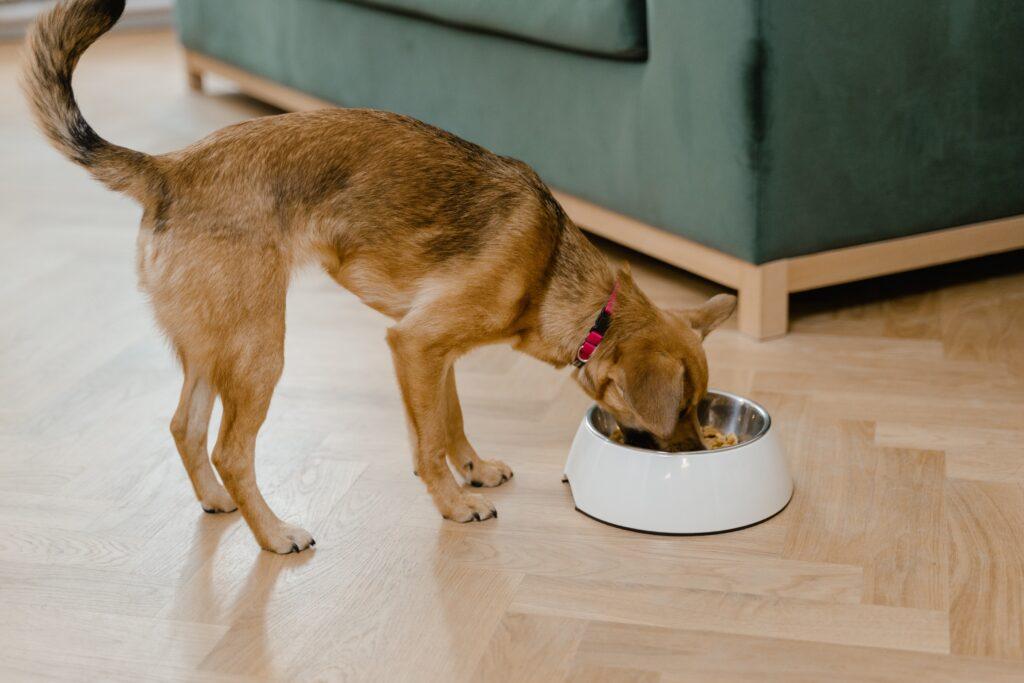
Ideally, you ought to give your dog food twice daily. Most crucial, these two meals need to be served every day at the same time. They will eventually develop a regular schedule for going to the restroom each day. You can also keep an eye out for any health problems. Dogs who are feeling under the weather might not eat as much. As a result, if your dog follows a regular eating schedule, any problems will be obvious.
Ensuring they don’t receive more food than what your veterinarian advises is crucial. For optimal feeding, it’s essential to speak with your veterinarian because some food labels might be deceptive. Remember that less priced dog feeds may not provide your dog with the same nutrients as products that adhere to the Association of American Feed Control Officials (AAFCO) nutritional requirements since they contain fillers like maize and brewers rice.
The feeding method that most dog experts advise against is letting your dog graze on a full bowl of dog food all day. This choice could be the simplest for dog owners with a hectic schedule, but your dog won’t gain anything from it.
When dogs have constant access to food, there is a greater likelihood that they may overeat, which can cause complications as they age like excessive weight gain or health problems like heart disease or diabetes.
Young puppies actually require a number of smaller, distinct meals in order to develop into healthy, powerful animals. As early as three to four weeks old, puppies are ready to begin eating solid foods. At that young age, it can be necessary to feed them up to five times per day. When using dog foods designed specifically for puppies, just keep the portions modest. The right amount of food for your puppy’s age and breed should be determined by your veterinarian.
When your dog reaches the age of six weeks, you can cut back on the number of meals to three or four per day. No matter what breed your dog is, three meals a day should be sufficient for them after eight weeks. Keep in mind that pups that are teething can start eating less for a while. Puppies between the ages of three and six months typically experience this.
Due to inactivity or health problems, dogs’ appetites may decline as they get older. They might not have the same amount of energy to run around as they did when they were younger, thus they won’t require as much food. You might wish to switch them to a senior dog chow that has fewer calories at this stage of their life, or just start feeding them less frequently.
Some older dogs are more vulnerable to a variety of ailments. In order to keep them healthy as they age, they will need to keep an eye on their eating patterns and maintain a healthy weight.
Please keep in mind that dogs have sensitive stomachs when feeding your pet. Frequently changing pet food brands could make them uncomfortable. If you decide to switch, make sure to do so gradually over a few weeks so they have time to adjust to the new flavor and recipe.
Overall, your dog is the finest resource for determining its needs. You can be overfeeding them if they appear to be in wonderful health but aren’t finishing all of their food. They may be deficient in important nutrients if they are constantly hungry.
It’s critical to understand what your dog eats. The quantity, rate, and manner in which they digest their meal will give you a decent idea of their health, level of activity, and general contentment.
If you are interested in any other information you can reach out to us on our contact page or visit our Facebook Page.
Without any negative consequences, milk and other milk-based foods are enjoyed and beneficial by many dogs. If you want to include dairy products in your dog’s diet, stick to these recommendations.
Any food given to dogs may cause conflict, but dairy products cause conflict more frequently than most.
Due to their high levels of protein, calcium, potassium, vitamin D, B vitamins, zinc, and other minerals, milk and dairy products are highly appreciated. Because of this plus the fact that the majority of dogs adore dairy products, milk and other milk-based foods continue to be common additions to canine diets.
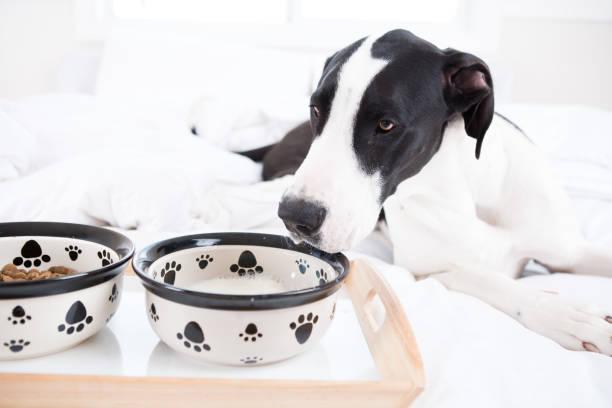
Healthy young puppies may easily digest their mother’s milk, but adult dogs frequently struggle to process lactose, the sugar found naturally in milk. Diarrhea, vomiting, appetite loss, bloating, gas, and other lactose intolerance symptoms are attributed to the lactose in cow’s milk.
The discussion of dairy for dogs up until recently centered on the production and processing of milk. Dairy cattle are frequently raised in cramped quarters nowadays, fed unsuitable diet, and given hormone and antibiotic treatments that leave residues and lower milk quality. People who believe milk is the best nourishment for adult dogs and puppies call for a return to small-scale, ethical, organic, grass-fed dairy farming.
The nutritional value of milk is said to have decreased as a result of pasteurization. Milk is pasteurized to eliminate dangerous bacteria, yeast, and molds; ultra-pasteurization (treatment at higher temperatures) further increases shelf life.
Critics of these practices assert that pasteurization kills the valuable enzymes in milk and changes the proteins in milk. These people recommend raw milk as the cure. Updates, resources, and safety information on raw milk are available from the Campaign for Real Milk (realmilk.org). While laws differ from state to state, raw milk products for dogs are available in a number of states at pet supply stores.
Additionally, homogenizing is criticized. As cream separates from fresh whole milk, it rises to the top. The majority of dairies sell homogenized milk, which has been processed under high pressure to break the cream into small particles and produce a homogenous combination. Some dairies sell whole milk with a layer of cream on top. It is uncommon to homogenize goat’s milk or sheep’s milk because the fat molecules are already tiny enough to produce a consistent texture.
While milk production and processing techniques continue to be important issues, genetics has altered the dairy for dogs discussion. A1 beta-casein, a milk protein, is produced by a mutation that affects over half of America’s dairy cows. Recent studies have suggested a connection between human health issues like allergies, dyspepsia, and possibly autoimmune illnesses and the consumption of A1 milk, which is produced by Holstein cattle, the most productive dairy cows in America.
In contrast, the older, original A2 gene is more prevalent in cows like Guernsey, Jersey, Charolai, Limousin, Norwegian Reds, and Brown Swiss cows. A Systematic Review of the Gastrointestinal Effects of A1 Compared with A2 Beta-Casein, published in the September issue of the journal Advanced Nutrition, is one of more than 200 studies comparing the effects of A1 and A2 milk in the medical literature. According to that study, both rodents and people who consume A1 milk experience gastrointestinal discomfort and have inflammatory response markers.
While there haven’t been any scientific studies comparing A1 and A2 milk’s effects on dogs, anecdotal tales from vets, breeders, and owners describe dogs with dyspepsia brought on by dairy doing better on A2 milk.
In American supermarkets and natural food stores, it is now simple to locate milk that is branded as A2 or A2A2 (which denotes that both parents of the cows who produced the milk have the A2-milk producing genes).
Sheep, goats, bison, camels, donkeys, and yaks are additional animals that can produce A2 milk. Any of these milks can be given as a supplement for young puppies or as a way to help sick or elderly dogs recover from their illnesses.
Dairy products manufactured from milk, particularly cow’s milk, may cause dogs either no issues at all or severe stomach disturbances. The common explanation for complaints is lactose intolerance.
In comparison to whole milk, cottage, Swiss, and cheddar cheese have much lower lactose content per ounce. Most dogs can accept string cheese or young (as opposed to aged) cheddar training rewards better than old hard cheeses. Mycotoxins, which can be poisonous to dogs, are present in ripened cheeses including Roquefort, blue cheeses, and Stilton. These veined, fragrant cheeses are made with roquefortine C, a toxin that can make dogs throw up, have fever, and even have convulsions.
The salt level in feta and various other forms of aged, hard cheese is considerable. Dogs with heart illness, Addison’s disease, advanced kidney disease, and other disorders that call for a low-salt diet might suffer from too much salt. Goat, Swiss, mozzarella, cottage, and ricotta cheeses often have minimal salt content.
The fat content of cheese, which can cause weight gain and, in rare situations, pancreatitis, a serious condition in dogs, is another issue. Mozzarella, cottage cheese, and cheeses marked “low fat” or “reduced fat” are examples of cheeses that are lower in fat. Moderation is your best cheese-feeding advice because eating large amounts of any cheese can lead to issues.
Whey, a leftover substance from producing cheese, has historically been fed to farm animals, including dogs. Whey protein powder is marketed as a sports supplement that can help canine athletes and dogs who are recuperating from illness or injury perform better. Consult your veterinarian and make any necessary dietary changes for your dog if they think they would benefit from a whey supplement. Some retailers and farms sell liquid raw-milk whey; visit getrawmilk.com for more information.
A microbiome is an umbrella word that encompasses colonies of bacteria, viruses, fungus, and other microbes in the body, particularly in the digestive tract.
Beneficial or “friendly” microorganisms emit substances that kill off undesirable bacteria. Colonies of good bacteria starve dangerous microorganisms by denying them resources and space if they are present in sufficient quantities. The immune system’s first line of protection is a healthy microbiome.
Dogs with yeast infections, inflammation, skin problems, allergies, and digestive disorders are frequently advised to consume lactofermented dairy products, which are probiotics that maintain the microbiome.
The most well-known fermented dairy products are yogurt and kefir, both of which have recently gained popularity as dog food. Especially after receiving antibiotic therapy, they support the body’s healthy bacteria by restoring digestion, boosting the immune system, and strengthening the immune system.
In natural food markets and pet supply stores, a variety of yogurt and kefir products, some of which include extra ingredients, are sold. These goods include fresh or frozen goat’s milk and cow’s milk products (check labels). Making your own plain, unflavored, sugar-free yogurt or kefir is the most economical and straightforward option.
Yogurt starters and live milk kefir starter grains that have been dehydrated are widely accessible. Both the fermentation process and active cultures, which continue to digest lactose while the cultured milk is refrigerated, aid in reducing the amount of lactose in milk.
While kefir ferments at ambient temperature, yogurt must be made in a warm, consistent environment, such an electric yogurt maker. Use organic, pasture-raised A2A2 milk or goat’s milk if you can. Kefir and yogurt should be refrigerated or frozen for long-term storage. Search online for “make your own yogurt or kefir” to find how-to videos on YouTube.com and other websites that walk you through the process.
Start introducing these foods to your dog’s diet in tiny doses, such as 1 teaspoon per 20 pounds of body weight. Wait 24 hours before checking for gastrointestinal issues like diarrhea. Add more the next day if your dog likes the taste and appears healthy. According to some experts, you should give your dog up to 2 tablespoons of yogurt or kefir per 20 pounds of body weight each day, but many healthy dogs consume much more. For the best outcomes, keep an eye on your dog’s reaction and consult your veterinarian.
Dogs enjoy frozen dairy treats much like their owners do, but it’s possible that the treats don’t reciprocate. Cow’s milk ice cream is likely to be artificially flavored, rich in fat, high in lactose (and presumably high in A1 milk proteins), and sweetened with sugar. Always check the ingredients; xylitol, which is highly poisonous to dogs, is a component of certain ice cream.
Typically lactose- and xylitol-free, dog-specific ice cream products may nevertheless contain sweeteners like maltodextrin, polydextrose, sorbitol, and other dubious substances.
Making a healthier substitute is as simple as freezing plain yogurt or kefir in popsicle molds, ice cube trays, or freezer pop molds. Before freezing, fresh fruit, peanut butter, or other sugar-free flavorings can be added. Wooden sticks can also be used to hold the dog treats.
It’s no secret that dogs adore dairy products! Your dogs can fall in love with milk-based products that love them back thanks to carefully chosen ingredients. If you are looking for more information you can contact us through our contact form or you can visit our Facebook Page.